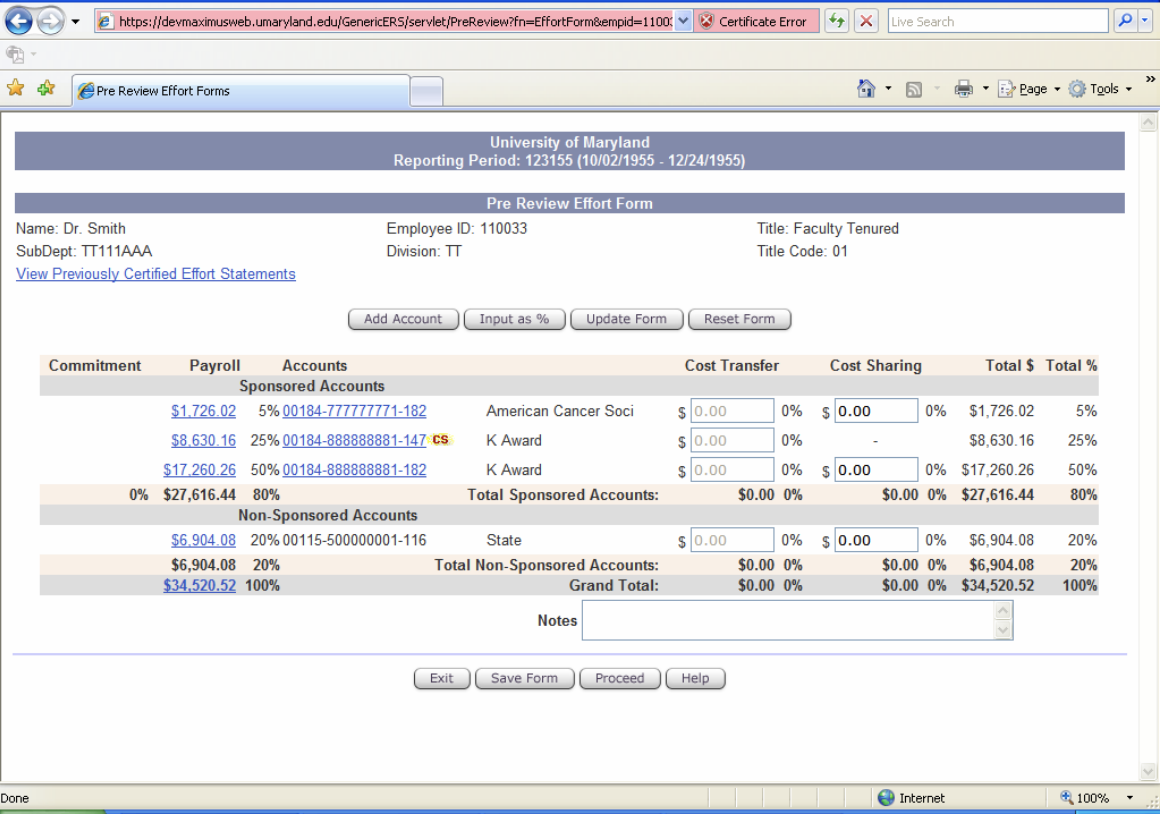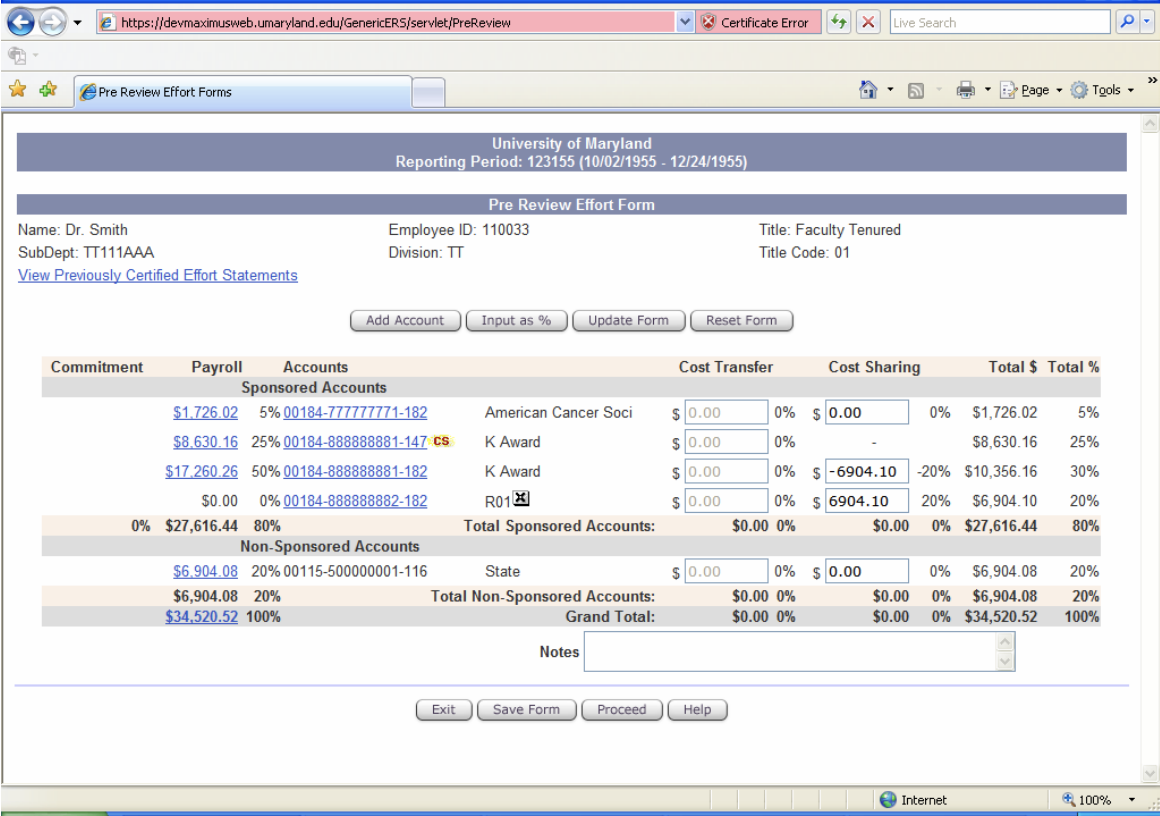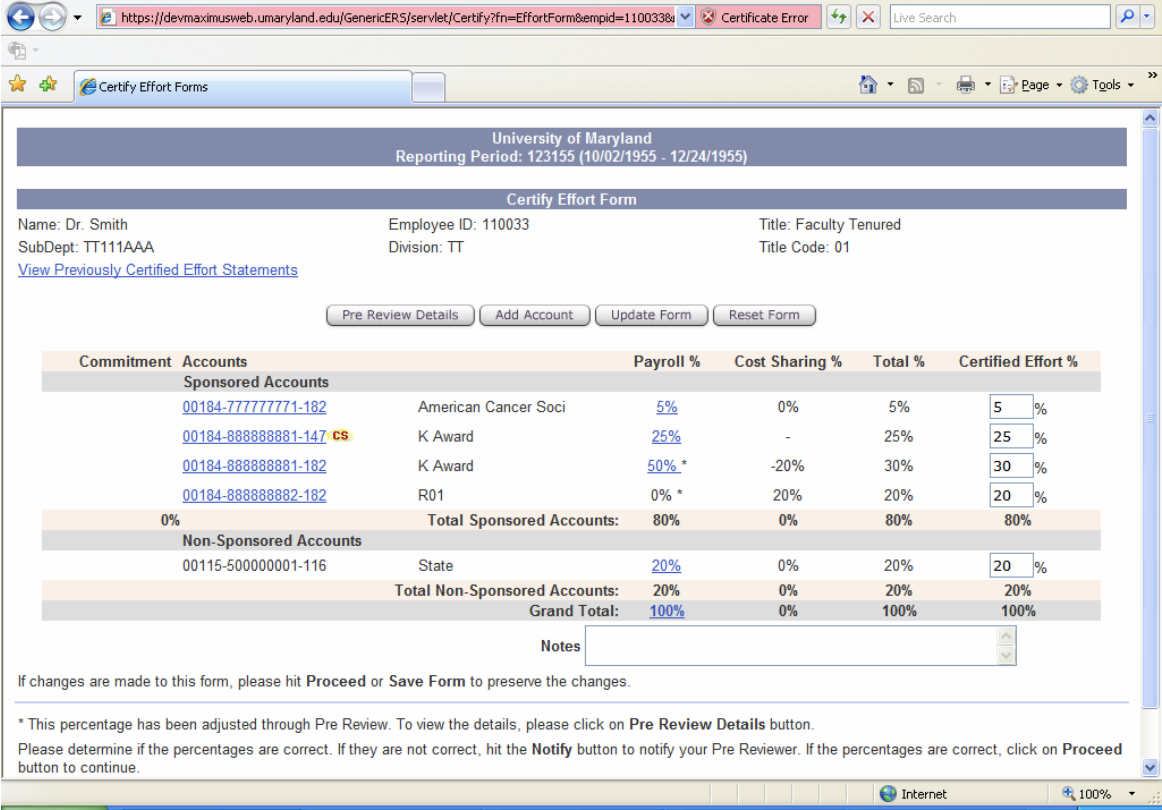About UMB History, highlights, administration, news, fast facts
- Accountability and Compliance
- Administration and Finance
- Center for Information Technology Services
- Communications and Public Affairs
- Community and Civic Engagement
- Equity, Diversity, and Inclusion
- External Relations
- Government Affairs
- Philanthropy
- Office of the President
- Office of the Provost
- Research and Development
- University Counsel
- Office of the President
- Administrative Officers
- Deans
- Boards of Visitors
- Faculty Senate
- Staff Senate
- University Counsel



 The PreReviewer will need to add Dr. Smith’s R01 from which she is not receiving salary support to the form through the “Add Account” button. Then, in the cost sharing column on the effort form, the PreReviewer will need to transfer 20% effort from the K-Award to the R01. This will have no effect in eUMB, but will serve to document the effort to the correct awards and to link the K-Award with its related competitive research grant.
The PreReviewer will need to add Dr. Smith’s R01 from which she is not receiving salary support to the form through the “Add Account” button. Then, in the cost sharing column on the effort form, the PreReviewer will need to transfer 20% effort from the K-Award to the R01. This will have no effect in eUMB, but will serve to document the effort to the correct awards and to link the K-Award with its related competitive research grant.
